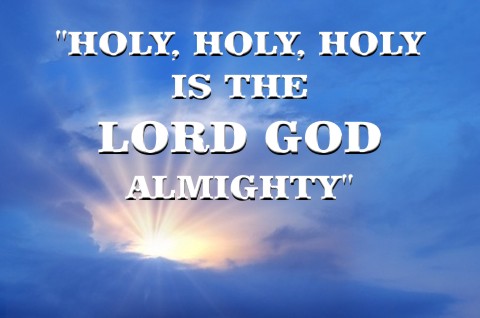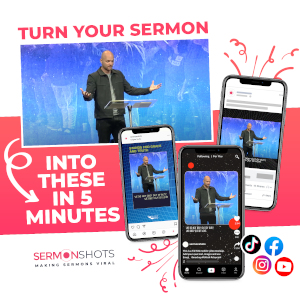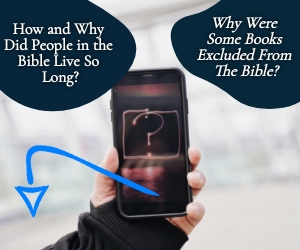What are 5 examples of worship you can find in the Bible? What ones would you include?
What is Worship?
The word in the Hebrew for worship in the verb form is “shachah” and it means “to bow down, to prostrate oneself” or to “lay flat on the ground.” We see many in the Old Testament prostrate themselves before the Lord. The Greek word for worship that is often used in the New Testament is “proskyneō” and this means to “kiss the hand, to fall on the knees,” or to “prostrate oneself” which is similar to what it is in the Old Testament but there are other Greek renditions of the word worship like “prokeneuo” which means to “pay homage” and “sebazomai” which mean “to render religious honor.” The word worship comes from the old English word “weorþscipe” with the root of it being “worthiness” or “worth-ship” or “worth – to give” or in its simplest form, “worth to something.”
Jesus told the woman at the well “true worshipers will worship the Father in spirit and truth, for they are the kind of worshipers the Father seeks. God is spirit, and his worshipers must worship in spirit and in truth” (John 4:23-24). Other translations of the word worship, particularly in the Old Testament mean to “touch the forehead on the ground.” We define worship as revering, reverence, adoration, veneration, paying homage to. Sadly, according to this definition, we sometimes worship anything but God like sports, a favorite team, a sports star, our children or spouse, our car or any number of things or persons which we are commanded not to do, even if they are angels (Ex 20:3-6; Rev 19:10). Paul tells us that our reasonable worship is “to present your bodies as a living sacrifice, holy and acceptable to God, which is your spiritual worship to God” (Rom 12:1). To worship anything or anyone else besides God is idolatry, so what are some great examples of worship in the Bible that we can emulate or follow in example?
The Position of Worship
There is no prescribed method of the position one must be in to worship and they vary widely among different congregations and nations. Some bow their head and lift their hands, some lift their hands and head, some lay flat on the floor, some kneel, while others simply stand and close their eyes. We can worship in words and in song but the Bible never clearly commands any particular position to worship.
Revelation 4:8-11 “Each of the four living creatures had six wings and was covered with eyes all around, even under his wings. Day and night they never stop saying: “HOLY, HOLY, HOLY IS THE Lord GOD ALMIGHTY, WHO WAS, AND IS, AND IS TO COME.” Whenever the living creatures give glory, honor and thanks to him who sits on the throne and who lives for ever and ever, the twenty-four elders fall down before him who sits on the throne, and worship him who lives for ever and ever. They lay their crowns before the throne and say: “You are worthy, our Lord and God, to receive glory and honor and power, for you created all things, and by your will they were created and have their being.”
This is the only attribute where God is worshiped and acknowledged three times when the angels proclaim “HOLY, HOLY, HOLY IS THE Lord GOD ALMIGHTY, WHO WAS, AND IS, AND IS TO COME.” Part of these angels worship was to declare, to the 3rd power, that God is holy. That is all that these four living creatures do, night and day. Even the elders fall down before God and cast their crowns at His feet for indeed, He is “worthy.” These elders may represent the church in general and for me, as long as I am physically able, I try to worship God in private on my face, lying flat on the ground or prostrate.
Matthew 28:17-18 “Now the eleven disciples went to Galilee, to the mountain to which Jesus had directed them. And when they saw him they worshiped him, but some doubted.”
After Jesus’ death on the cross, His disciples and followers had lost all hope but “when they saw him they worshiped him” strangely, “some doubted.” Why? Perhaps they had seen Him at a distance at first because Jesus was on the mountain where He had directed them and perhaps they saw Him at a distance. Possibly all doubt was removed once they stood next to Him. In any event, worshiping Jesus, even today at a great distance as He is at the right hand of the Father, some may still doubt but many of us have our own “doubting Thomas” moments, don’t we? If we know someone like that, we are told to “have mercy on those who doubt” (Jude 1:22).
Luke 24:50-53 “Then he led them out as far as Bethany, and lifting up his hands he blessed them. While he blessed them, he parted from them and was carried up into heaven. And they worshiped him and returned to Jerusalem with great joy, and were continually in the temple blessing God.”
Can you even imagine seeing Jesus ascending up into the heavens? Luke describes the “Ascension” for us here and just after Jesus blessed them He was carried up into heaven and that is when they worshiped him. In the truest form of the use of this word in the Greek “proskyneō” this could either mean they worshiped Him by kneeling or as many of the Orientals and Persians did at this time, they “fell upon the knees and touched the ground with the forehead as an expression of profound reverence.” Since that was the custom of the time, I believe that is what true worship is and what their method of worshiping the ascending Christ was.
1 Kings 8:22-23 “Then Solomon stood before the altar of the Lord in the presence of all the assembly of Israel and spread out his hands toward heaven, and said, “O Lord, God of Israel, there is no God like you, in heaven above or on earth beneath, keeping covenant and showing steadfast love to your servants who walk before you with all their heart.”
Here is what frequently happens in our church. During worship music people spread out their hands and worship God in song and in silent prayer. Many people have their own unique way to worship and when we stand before the altar of the Lord, which today is in heaven, and since we have access to heaven through the Mediator, Jesus Christ, we can worship anytime, anywhere from any place.
First Chronicles 16:28-30a “Ascribe to the Lord, O families of the peoples, ascribe to the Lord glory and strength! Ascribe to the Lord the glory due his name; bring an offering and come before him! Worship the Lord in the splendor of holiness; tremble before him, all the earth.”
When we “ascribe to the Lord the glory due his name” we are acknowledging that He is worthy to be worshiped. The word “ascribe” means to attribute a characteristic to God and in these verses it is the glory due Him, the honor due Him, the splendor of His holiness, and that should give us pause and cause to “tremble before him” which means we should have a high reverence or reverential fear or respect of the uttermost.
Conclusion
If you worship Christ, you may kneel to the ground, bend the knee, fall on your face, touch your head to the ground or floor, or lay prostrate or flat on the ground or floor. I truly prefer the latter when I worship God in the privacy of my own home. During church services, I bend my knee, bow my head, and lift my hands…but whichever way you worship Christ, He is most worthy of such honor and worthy to be praised. May you also be “continually in the temple blessing God,” even if it’s in your own body which is the new temple of the Holy Spirit or in your church home or in the privacy of your own house.
Related reading: What Does it Mean to Worship in Spirit and Truth?
Resource – Scripture quotations are from The Holy Bible, English Standard Version® (ESV®), copyright © 2001 by Crossway, a publishing ministry of Good News Publishers. Used by permission. All rights reserved.









 Welcome to What Christians Want To Know! The mission of this site is to equip, encourage, and energize Christians. Look for regular updates including Bible Verses, Bible Stories, Christian Quotes, Christian Answers, and much more. Find out
Welcome to What Christians Want To Know! The mission of this site is to equip, encourage, and energize Christians. Look for regular updates including Bible Verses, Bible Stories, Christian Quotes, Christian Answers, and much more. Find out 









